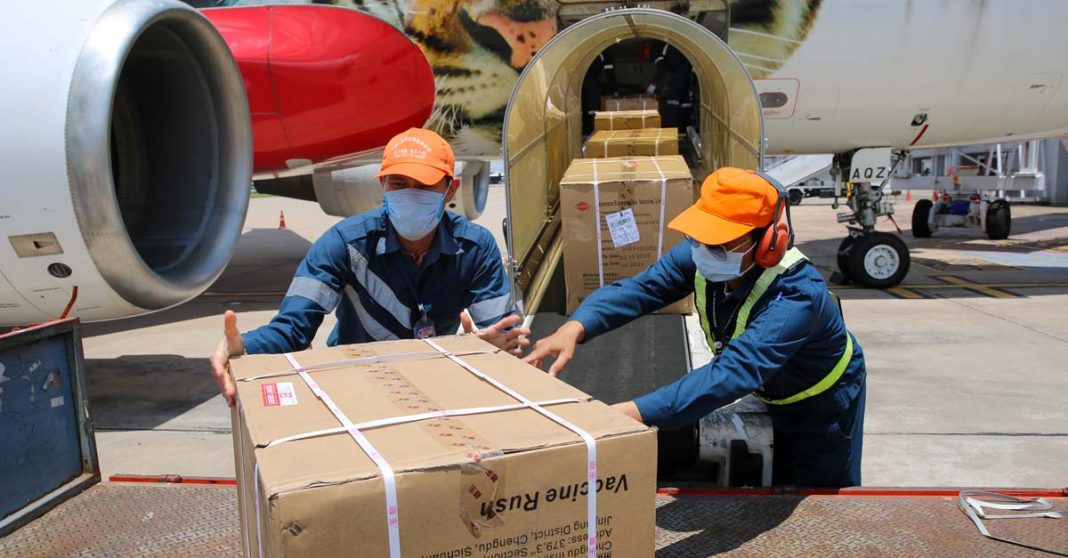Op-ed by Jan Delbaere, World Food Programme Country Director and Representative in Lao PDR
When my son was a little boy and we lived close to the airport in Wuhan, China, he ran out of the house whenever he heard an airplane engine. He would look up to the sky and excitedly shout in Chinese: “The plane is coming, the plane is coming!”
Lately, I feel a similar surge of excitement at the sound of an aircraft. The skies are emptier than they have been in decades, and the thought of the humanitarian air bridge the World Food Programme (WFP) is building on a weekly basis to connect the Lao PDR with the outside world, fills me with hope.

This airplane memory is momentous for another reason, too. Little did we know then that the whole world can grind to a complete standstill in a matter of a few weeks. The reason is a global pandemic, which, by a strange coincidence, first scourged the same city I called home more than three decades ago.
COVID-19 has presented the whole world with a range of unprecedented challenges. At WFP, our biggest concern is the millions of vulnerable people that depend on our assistance across the world. Our longstanding global experience in running logistics operations in the context of large-scale emergencies, transporting food and essential supplies to the ones in distress, has helped us to react quickly to the situation the pandemic has created: WFP’s aviation service has started up, ensuring that humanitarian organizations can provide the people and equipment needed to respond to COVID and sustain relief operations.
Starting at the end of May, Laos has become part of this WFP global logistics air network, operating planes even in times when commercial carriers are grounded. Every Sunday, a WFP-chartered Air Asia plane flies into Wattay Airport from WFP’s regional humanitarian hub in Kuala Lumpur, Malaysia, after a stop in Yangon.
WFP operates three Global Humanitarian Response Hubs, with the closest one situated in Guangzhou, China. From there, masks, gloves, and ventilators are distributed to regional hubs, such as the one in Kuala Lumpur, from where a fleet of smaller planes move the cargo into countries. These past weeks, hundreds of boxes of COVID response equipment and other health supplies, as well as over 100 staff from aid organizations have made their way in or out of Laos.

In June, one million doses of measles and rubella vaccine, 39,400 doses of the flu vaccine, and 230,000 doses of Japanese encephalitis vaccine reached Vientiane on these flights. The vaccines, procured by UNICEF, are critical to addressing shortages caused by the current global logistics challenges. They are essential to contain the outbreak of diseases that can be prevented by vaccination. The vaccines are currently under distribution to health facilities throughout Lao PDR to supplement routine immunization.
These supplies will continue to arrive in Laos on WFP-chartered planes until regular commercial flights are back in service. During the coming weeks, a cargo-only flight will arrive to Vientiane, directly from the Global Humanitarian Response Hub in Guangzhou, bearing essential medical supplies and health care equipment.
Even in times of global logistics standstill, we cannot let essential, regular health services break down. The price would be too high to pay, adding to the plight of countries that are already struggling to maintain basic healthcare systems.
My son is a grown-up man today. The memory of our time in Wuhan is slowly fading. But each Sunday when I hear another humanitarian flight approaching Wattay Airport, I feel just as hopeful about the future of Laos and the whole globe as I was feeling of my little boy back then.
The views expressed in this article are those of WFP alone and not the Laotian Times.



